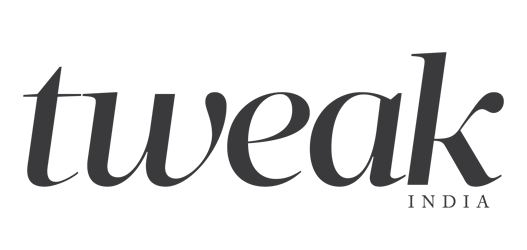
Intermittent fasting: 5 ways to make the weight loss diet work for you
So you’re not so furious when you fast
“I lost five kilos in a month,” said one friend. “I feel so energetic and focused throughout the day,” chimed in another. They weren’t talking about magic pills but instead, something that makes weight seemingly disappear just as quickly — intermittent fasting. A diet trend that first started gaining popularity in 2018, championed by celebrities like Jennifer Lopez and Kourtney Kardashian.
Intermittent fasting involves limiting your meals to a certain period of time during the day, and fasting for the remaining few hours to give your digestive system enough time to process and break down the food you eat. And after all I’d heard and read, I was ready to try it.
But after two weeks of skipping breakfast and eating dinner by 8 pm, I was bloated, more acidic than if I’d done a keg stand and had a constant headache. I fell off the wagon and realised that my method of intermittent fasting was too extreme for my body and erratic lifestyle. While still an effective weight loss method, your body needs a version that suits you—and experts have devised versions for different lifestyles. We’ve broken down the five most popular ways of going from feasting to fasting.
5 ways to try intermittent fasting
16:8 — Ideal if you’re used to skipping breakfast anyway
You’re a serial snoozer, which means no time for breakfast—and while that may piss of your mum, it might not be such a bad thing for intermittent fasting. “In the 16:8 method of intermittent fasting, you allow the body to fast for 16 hours to eliminate toxins, cleanse and repair the systems, and eat only for eight hours in a day,” says Luke Coutinho, a holistic lifestyle coach in integrative medicine.

An ideal example would be to cut off meals at 8pm, and resume eating at noon the next day. “During the fasting phase, drink only plain water without any additives (no tea, coffee, green tea, apple cider vinegar). Break the fast with a lemon and water concoction, followed by a whole fruit. You can then eat nuts after 20 minutes and a light homemade meal (like dal, rice, cooked veggies) an hour after that,” he adds. Follow this with a snack and dinner during the eating period, and then begin your fast.
“This is also the best method to break a weight loss plateau, tackle hormonal imbalances, kidney problems and cardiovascular problems, as it makes you feel energetic and light,” he says.
5:2 — Ideal if you’re looking for a little diet flexibility
A lot of us millennials live with erratic schedules—with pub nights turning into midnight sushi binges faster than you can say chopsticks. On the flip side, there are days we are so consumed with work that all we end up eating is a fruit and a sandwich. Now, you can make the most of this as the 5:2 diet requires restricting your calories to only 500 a day—just twice a week. The two fast days should not be consecutive, and should include two meals of 250 calories each. You can eat normal food for the remaining five days of the week, but try keeping it as healthy as possible for quicker results.

Nutritionist Anupama Menon says, “When you break the fast, ironically a small measure of food fills you up faster than you would think. And it’s clever to listen to your tummy at this point. More than the quantity of food, it will be the quality of food that will satiate your nutritional requirement. The body is under a state of starvation and will absorb what you give it most efficiently. So, give it protein, a spool of vegetables and a modest portion of carbohydrates.”
Eat, Stop, Eat — Ideal if you love a strict diet—once or twice a week
The eat, stop, eat method proposed by nutrition expert and author Brad Pilon is traditionally like those religious fasts your grandmother loves to do on certain days of the week (you probably won’t be blessed with same susheel husband for seven janams in this version though).

Instead, you pick one or two days in the week where you fast for 24 hours to give your digestive system a break. The only difference is that this fast can be from breakfast to breakfast, lunch to lunch or dinner to dinner. You can consume water, coffee and non-caloric drinks in the fasting period, but no solid foods at all.
Alternate day fasting — ideal if you’re a pro at IF and want to turn it up a notch briefly
We wouldn’t recommend this one if you’re a beginner at intermittent fasting or sustaining this for a long period of time. As the name suggests, this method involves fasting every alternate day—you eat normally for one day, then restrict calories to less than 500 a day for the next day, and so forth.

On the fast days, ensure you eat proteins, vegetables and healthy fats, but avoid sugar and starches. Avoid overeating on the days you’re not fasting to see quick weight loss and better heart health.
In a recent study, participants who followed alternate day fasting lost on average 3 kilos within a 4-week period, had lower belly fat and reduced cholesterol levels. Professor Frank Madeo says, “It is a good regime, for some months, for obese people to cut weight, or it might even be a useful clinical intervention in diseases driven by inflammation. But further research is needed before it can be applied in daily practice.”
Dry fasting
Ideal if: You need a thorough body cleanse
If you’re ready to sign up for dry fasting, you have a herculean task ahead. “Dry fasting is a notch above intermittent fasting, as you’re not even allowed to consume water during a 10 to 12 hour fasting period,” says Coutinho. “It is a superior form of cleansing as your digestive system is in complete shutdown and can focus on repairing from the inside.

Its benefits include reducing inflammations, increasing stem and immune cells and healing the gut, among many others,” he adds. Since this is quite the extreme method, make sure you’re listening to your body and how it responds—especially if you live in hot, humid climates, and have no visible camel humps.
“Intermittent fasting is actually very natural to our body, so there are no side effects. But is is essential for one to listen to their body and avoid pushing it beyond its limits. It is also important that it should be done in an informed way and with the advice of a medical professional especially in case of a medical condition like diabetes, cancer or kidney diseases,” advises Coutinho.
WATCH NOW: 5 ways to get fit, according to a vegan bodybuilder

